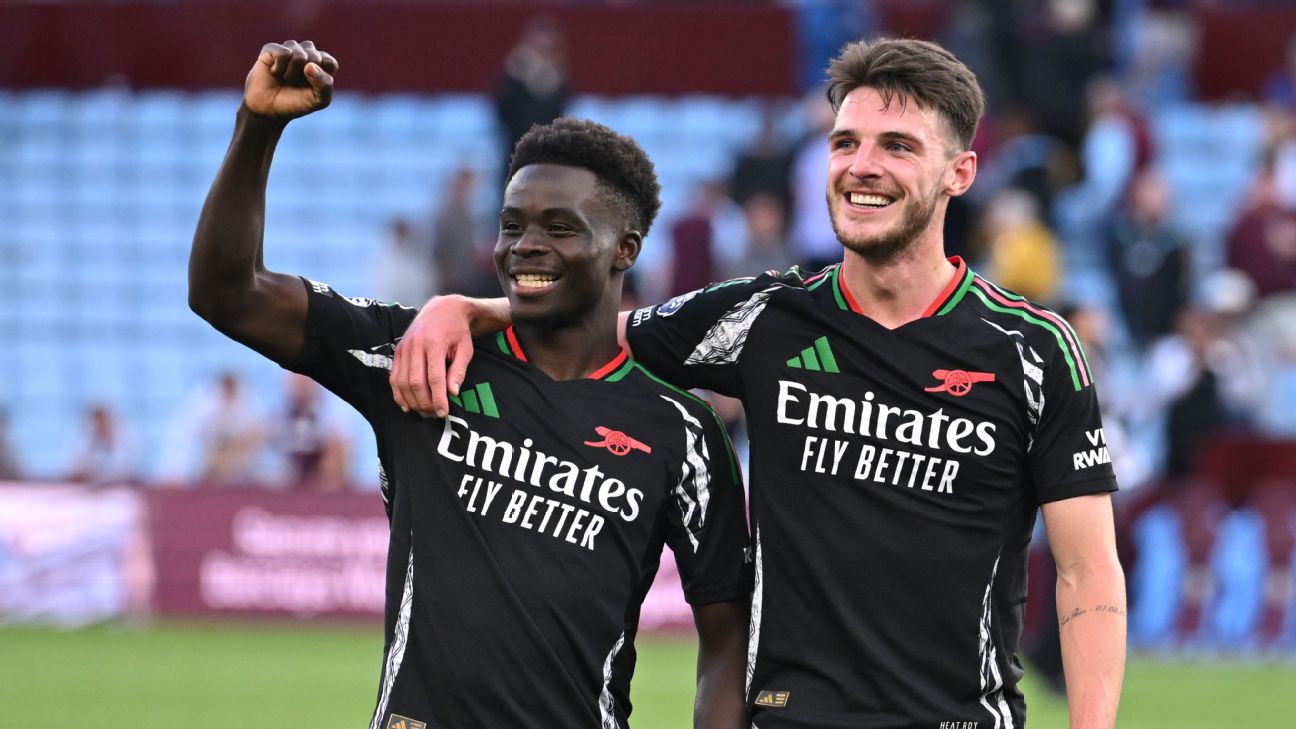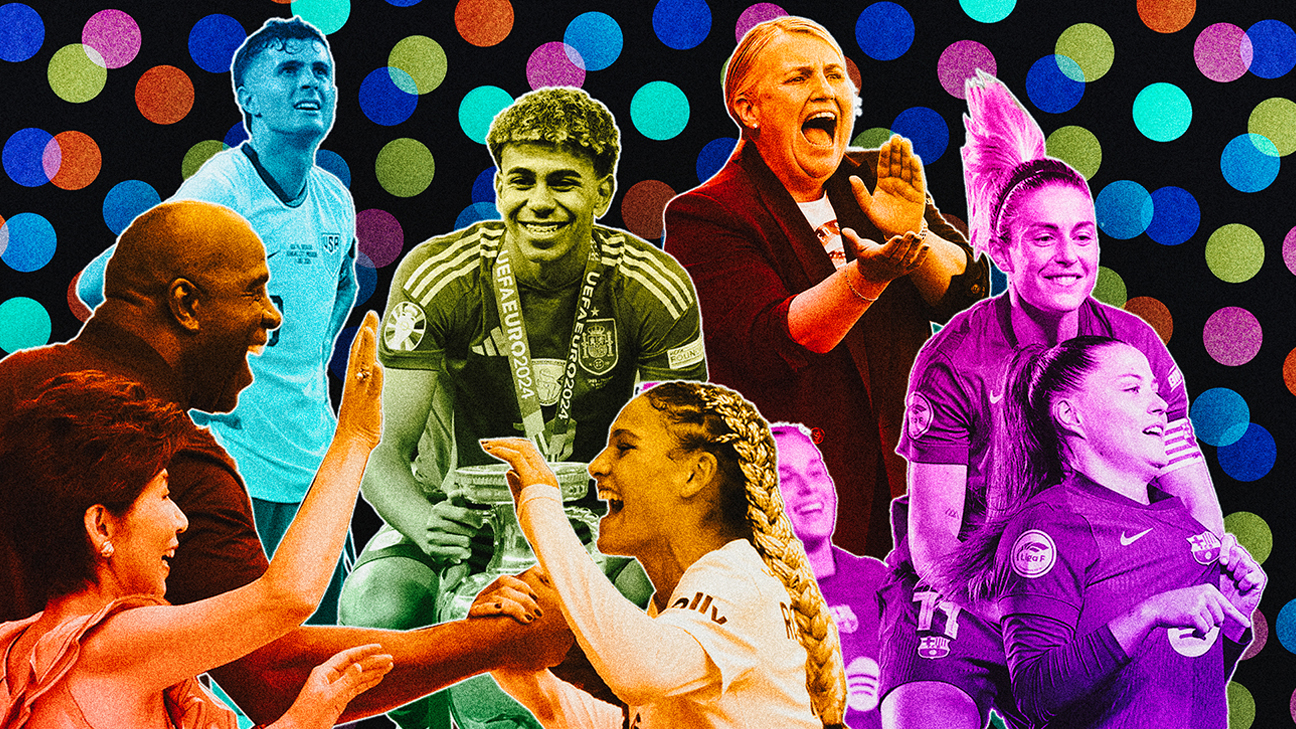One of the secrets to soccer, a multi-million-dollar question with a hundred-million-dollar answer, is understanding how players age. Imagine if, say, you could tell the difference between Eden Hazard and Karim Benzema?
At 27, Hazard was arguably the best player in the Premier League — one of the only players in the world who was an elite outlet, ball-mover and goal-creator. In NFL terms, he was a running back, wide receiver and quarterback all at once. In his age-27 season, Hazard scored 16 goals and assisted 15 more in domestic play. In the four seasons since, he scored 11 and helped on four — total. Almost overnight, Hazard transitioned from one of the 10 best players in the world to total irrelevance at the top level.
At 29, Benzema looked finished. He scored five goals and assisted 10 more — respectable numbers if you’re an average player, but disappointing if you’re Real Madrid’s starting center forward. The prior year wasn’t much better, either: 11 goals and five assists. Then, he turned 30 and … averaged 23 goals and nine assists over the next four seasons. Benzema won the Ballon d’Or, in a landslide vote, at 34. He peaked after his peak was supposed to end.
These players, of course, eventually played for the same team. Hazard joined Real Madrid after that lights-out age-27 season. And so the club has experienced first-hand the frustrating vagaries of how players improve and decline and age.
On the one hand, signing Hazard for €100 million was a lesson in why you don’t invest such large transfer fees in older players: they usually get worse. And yet from age 30 on, Benzema’s performance was worth so much more than €100m. Had Madrid given up on the Frenchman back when he entered his third decade, they probably would have two fewer LaLiga titles and just 13 Champions League trophies.
The lesson from these two stories might seem like it should just be that most players don’t age gracefully, but Real Madrid also just happened to hang onto one of the few who do. It’s all random; don’t chase the outliers.
However, ahead of Real Madrid’s derby clash with Atletico on Sunday (stream LIVE on ESPN+, 3 p.m. ET
When players age
Back when he was the Director of Analytics with Roma, Luke Bornn was worried about Edin Dzeko. The club had acquired the Bosnian striker from Manchester City a year before Bornn arrived in Italy. The issue wasn’t that Dzeko wasn’t good; no, it’s that he was old. Roma signed him when he was 29.
“What’s funny is that at the time, I remember thinking, ‘Oh, we should probably think about his age,'” Bornn said. “And he’s continued to be a beast even well into his 30s. He defied age.”
– Stream LIVE: Atletico Madrid vs. Real Madrid (Sunday 9/24, 2 p.m. ET, ESPN+)
Dzeko averaged at least 0.5 goals+assists per 90 minutes in all five of his seasons with Roma, and now plays for Inter Milan. Bornn has since become a co-owner first at Toulouse in France and now at Inter’s eternal, intra-stadium rivals AC Milan.
The approach at both clubs has been quite clear: get young, and fast. Last season, Toulouse were the third-youngest team in France (an average of 25.1, per FBref’s playing-time-weighted metric). And for the seven players for which Milan paid transfer fees this past summer, the average age was 23. Only one, 27-year-old Ruben Loftus-Cheek, was even older than 24.
This approach is backed up by lots of research into player aging, including a recent study by the analyst and consultant Bob Hayes, who looked at all player seasons from 2006-07 through 2021-22 across Europe’s Big Five leagues. (Full disclosure: Bob organized the panel I was supposed to moderate at the MIT Sloan Sports Analytics Conference. I got sick and was unable to attend.) In short, players peak much earlier and for a much shorter amount of time than we might expect.
Mario Melchiot can’t believe the start for Jude Bellingham at Real Madrid as he scores the winner in the opening match of the Champions League.
Looking purely at playing time as the performance metric, Hayes found that, on average, players peak between the ages of 25 and 27, with minor differences across positions.
“The baseline aging analysis primarily confirmed prior player aging research: players peak between the ages of 25 to 27, with center backs a little later and with minutes better maintained post-peak,” he said. “My data showed central midfielders peak a year earlier (24 to 26), which surprised me a bit but perhaps speaks to the increasing athletic demands on players writ large is most relevant for the players who have to cover a lot of ground. It is interesting how age curves are very symmetric for all positions, with a clearly identifiable band of the top three seasons. Overall, the big takeaway on this portion of the analysis is confirmation that players peak earlier than most fans realize.”
While playing time might not seem like the most satisfactory indicator of performance, the same analysis is largely mirrored in the output of the easiest-to-measure positions on the field.
“I think many people would be surprised by the extent to which it matches the minutes data”, Hayes said. “For my analysis, I did a version of this and found both strikers and attacking midfielders/wingers peak in goal contributions at age 26. If we want one tangible example, Harry Kane — who is often discussed as still firmly in his peak at age 30 — has yet to match his age-24 output across all major measures and dipped in non-penalty expected goals plus expected assisted goals per 90 minutes in each of his last two seasons.”
However, Hayes’s work wasn’t only concerned with replicating prior research — and what he found helps explain why Dzeko, a lanky, sneaky striker without much in the way of explosive physical skill, defied age and continued to be a beast well into his 30s.
How players age
Hayes sought out to answer a question long debated among nerds in all sports: Do skilled or athletic players age better?
The argument in favor of skilled players: well, skills like spatial understanding, game intelligence, ball control or shooting accuracy don’t really decline as you age. Speed and strength do.
The argument for athletic players: the fastest and strongest players will still be quite comparatively fast and strong even as they become less fast and strong. Meanwhile, skilled players are getting by on just-enough athleticism and won’t be able to contribute at the highest level once their physical skills drop below that threshold.
To find an answer, Hayes turned to a video game. He used the detailed player-ratings from FIFA (now called EA Sports FC) to classify all the players in his study into four groups: players whose best traits were athleticism-based, players whose best traits were skill-based, players who didn’t stand out in either category, and players who offered elite skill and elite athleticism. While there are issues with some individual player ratings in the game — younger players are broadly underrated, while stars tend to have inflated ratings across the board — EA Sports employs a massive group of scouts to assess each player, each year. It’s the biggest database of how players play soccer that you can find.
“In an ideal world, the public would have sufficient data to make the player classifications used in the study”, Hayes said. “I would want something like all existing tracking data, all existing event data, and input from reputable scouts with localized expertise. Well, thankfully, some well-resourced folks have exactly that collection of data: EA Sports FIFA. They also undertake the massively effortful process of distilling that data to a consistent ratings system with a good balance of depth and simplicity.”
With the players categorized, Hayes then applied the same minutes-played analysis to each of the four classifications of players, across all of the outfield positions. What did he find?
“Players who primarily derive their value from athleticism (as opposed to non-athleticism-based skill) experience steeper performance drop-offs later in their career than players who primarily derive their value from skills like dribbling, passing, shooting and tackling ability. A player’s skill level is much more highly correlated with his ability to sustain post-peak playing time than his athleticism level.”
Even the truly athletic outliers didn’t seem to experience a greater degree of post-peak playing time, while the more skilled a player got, the more likely he was to maintain playing time post his peak years.
“The relationship between a player’s skill level and his post-peak playing time (a correlation of 0.60) is far greater than his athleticism level with his post-peak playing time (0.22),” Hayes writes in the study.
From the study, here’s how it looks across all positions:
 (The numbers across the bottom are player ages; graphic courtesy of Bob Hayes)
(The numbers across the bottom are player ages; graphic courtesy of Bob Hayes)
The two other unmentioned things that stand out: 1) players with elite skill and athleticism age the best. (Duh.) And 2) athletic fullbacks actually age better than skilled fullbacks.
“Fullbacks are the one position where athleticism seems to be significant,” Hayes said. “This makes intuitive sense: the fullback position over the last decade has required immense athletic output via sprints, field coverage, and stamina. As a result, less-athletic fullbacks struggled to hang as their athleticism really dropped off in their late 20s. Meanwhile, pure soccer skill probably has mattered least for fullbacks, at least relative to the position’s athleticism requirements.”
In some ways, Real Madrid do seem to have an intuitive understanding of all this. Of their famed midfield trio, they’ve hung onto the skilled duo of Luka Modric and Toni Kroos both deep into their 30s, while they parted ways with the more athletic Casemiro last summer. The pair of the former has continued to provide quality minutes for one of the best teams in the world; the latter has largely struggled for the struggling Manchester United.
Carlo Ancelotti talks to the press after Real Madrid’s 1-0 win over Union Berlin in the Champions League.
Madrid also seem to understand that despite having more resources than any club not funded by sovereign wealth, there is still an optimal general direction to aim your financial advantage toward. After an apparent reversion to the Galactico era with the acquisition of Hazard, most of Madrid’s big moves have been for the likes of 20-year-old Jude Bellingham, 22-year-old Aurelien Tchouameini, and 18-year-old Eduardo Camavinga. Their Brazilian stars, Vinícius Júnior and Rodrygo, were both signed at 18, too.
Of course, it could still always be better. So how would the person who designed and executed this study use all of this new information to help a team with soccer games?
“I would not immediately go tell my whole club that athleticism does not matter,” Hayes said. “However, I would be more eager to get off of peak-age players that my data and coaching staff indicate are more reliant on their athleticism than their skill. In contrast, I would feel more okay handing a late-career contract extension to somebody with elite or high skill levels. Then, in the transfer market, I would use the same logic when looking at acquiring players, especially those in the mid- or late-peak phases: I would be more willing to invest in skill-dominant players than athleticism-dominant players.
“I would also be thinking about this for players I acquire even earlier in their careers, with an expectation that skill-dominant players will retain more value to my club later in their careers and thus may be worth paying more for earlier on.”
If Real Madrid ever starts doing all of that, then nobody else really stands a chance.



